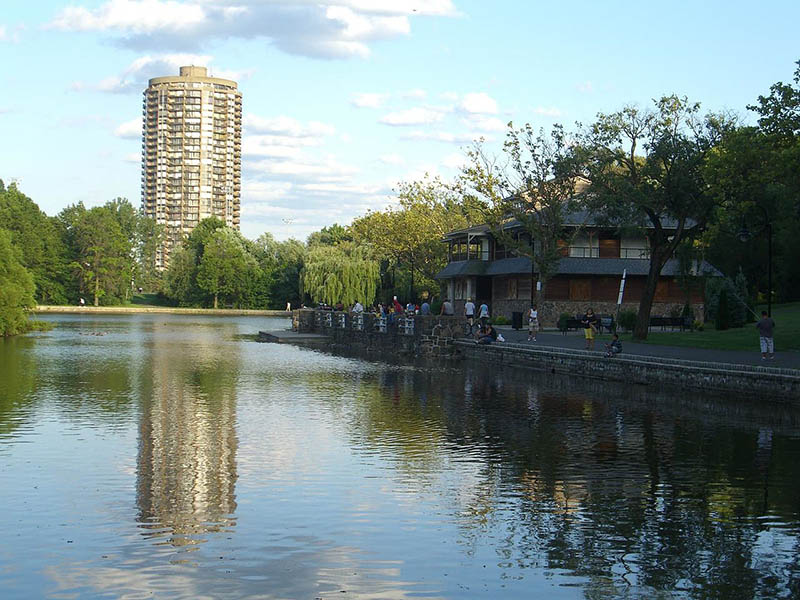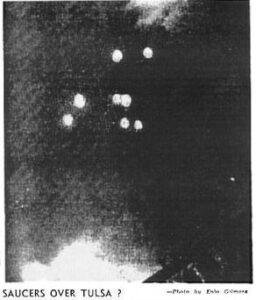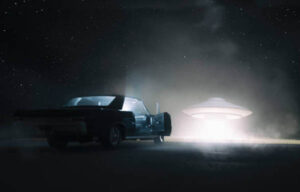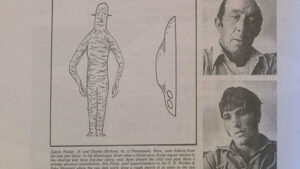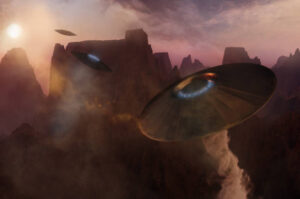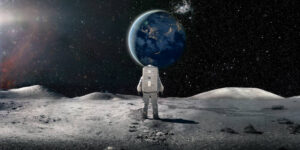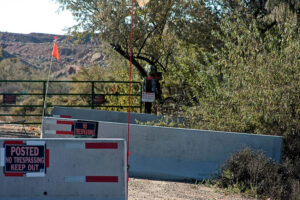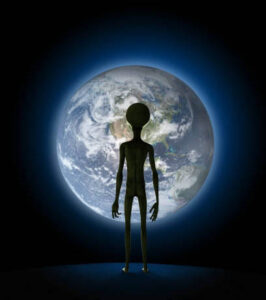The Stonehenge Incident, as reported by George O’Barski, is a controversial UFO encounter that took place in North Bergen, New Jersey, in 1975. The incident, unrelated to the ancient Stonehenge monument in England, revolves around O’Barski’s alleged close encounter with an extraterrestrial spacecraft and its occupants. The case has attracted significant attention from UFO researchers and enthusiasts due to its unusual nature and the conflicting information surrounding the event. In this article, we will examine the details of George O’Barski’s Stonehenge Incident, the controversy surrounding his claims, and the theories proposed to explain the encounter.
The Encounter
On the night of January 12, 1975, George O’Barski, a New Jersey resident and local businessman, claimed to have witnessed a UFO landing in North Hudson Park, near a housing development called “Stonehenge.” According to O’Barski, the object was a large, disc-shaped craft with a transparent dome on top. He reported observing several humanoid figures, approximately four feet tall, wearing silver suits and helmets, exiting the craft.
O’Barski claimed that these beings collected soil samples from the park using a tube-like device before returning to their spacecraft, which then ascended and disappeared into the night sky. He also alleged that he experienced several hours of missing time following the encounter.
UFOlogist Budd Hopkins Investigates
Budd Hopkins, an American artist and prominent UFO researcher, played a significant role in bringing attention to George O’Barski’s Stonehenge Incident. As an influential figure in the UFO research community, Hopkins was well-known for his investigations into alleged alien abductions and close encounters. He authored several books on the subject and co-founded the Intruders Foundation, an organization dedicated to studying UFO-related phenomena.
Hopkins took a particular interest in the Stonehenge Incident and conducted an in-depth investigation into O’Barski’s claims. He interviewed O’Barski and documented his account of the encounter, which included the details of the alleged extraterrestrial craft and its occupants. Hopkins also explored the possibility of missing time experienced by O’Barski during the event, a phenomenon often reported by individuals claiming to have had close encounters with UFOs.
By investigating the Stonehenge Incident and documenting O’Barski’s claims, Hopkins helped bring the case to the attention of the wider UFO research community and the public. His involvement lent credibility to the case, as he was a respected figure in the field, and his interest in the incident generated further discussion and debate surrounding O’Barski’s encounter.
However, it is important to note that the controversy surrounding the Stonehenge Incident, particularly the inconsistencies in O’Barski’s account and questions about his credibility, has led some UFO researchers and skeptics to question the authenticity of the encounter. As such, the influence of Budd Hopkins on the case has been a double-edged sword—while his involvement brought attention to the incident, it also made the case subject to greater scrutiny and skepticism.
Investigation, Theories, and Speculation
O’Barski reported his sighting to the police, who conducted an initial investigation but found no physical evidence to support his claims. UFO researchers also took an interest in the case and interviewed O’Barski, who provided a detailed account of the encounter and even sketched the craft and its occupants.
The Stonehenge Incident by George O’Barski has generated a range of theories to explain the alleged encounter:
- Hoax: Many researchers and skeptics believe that O’Barski fabricated the entire incident, either for personal gain or notoriety.
- Misidentification: Some suggest that O’Barski may have misinterpreted a conventional aircraft or other mundane objects as an extraterrestrial craft and its occupants.
- Genuine encounter: A smaller group of UFO enthusiasts maintains that O’Barski’s experience was a genuine close encounter with extraterrestrial beings, and that the inconsistencies in his account can be attributed to the stress and trauma associated with such an event.
Despite the various proposed explanations, the true nature of George O’Barski’s Stonehenge Incident remains a subject of debate. While some researchers found his story compelling, others questioned its authenticity due to inconsistencies in his account and the lack of corroborating evidence. The case became further mired in controversy when it was discovered that O’Barski had a history of making dubious claims and had previously been involved in legal disputes, casting doubt on his credibility.
Impact and Legacy
The Stonehenge Incident by George O’Barski is a controversial case in the history of UFO encounters, highlighting the challenges faced when investigating such claims. The incident serves as a cautionary tale for UFO researchers and enthusiasts, emphasizing the importance of corroborating evidence and witness credibility when evaluating alleged encounters.
The case also highlights the role that media and public interest can play in the perpetuation of UFO stories. O’Barski’s account gained traction in part because of its sensational nature, which captured the imagination of many people interested in extraterrestrial encounters. This underscores the need for responsible journalism and reporting in the field of UFO research, ensuring that only well-vetted and reliable information is disseminated to the public.
While the authenticity of O’Barski’s claims remains uncertain, the Stonehenge Incident continues to generate interest and debate among those fascinated by the enigmatic world of UFOs and extraterrestrial encounters.

